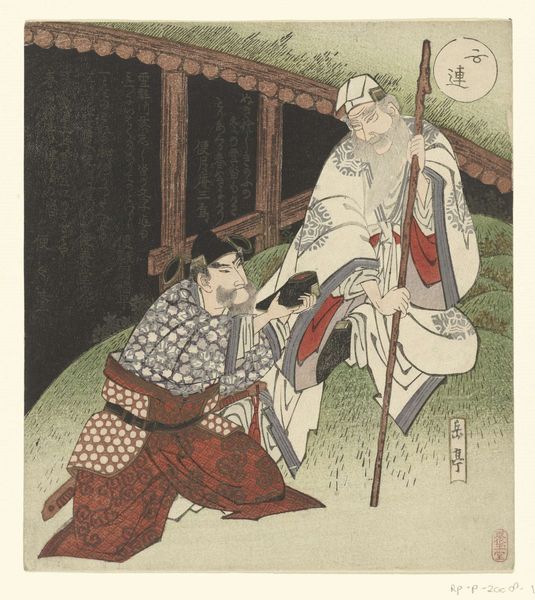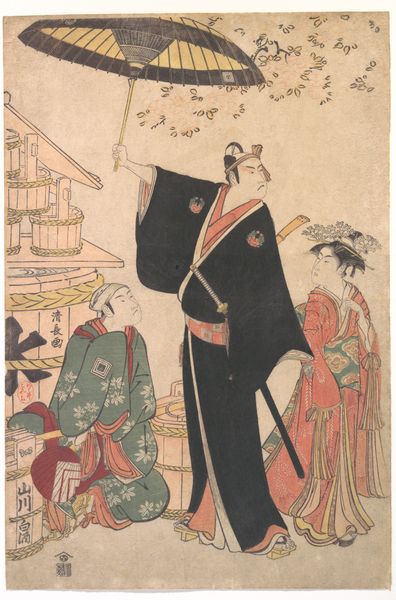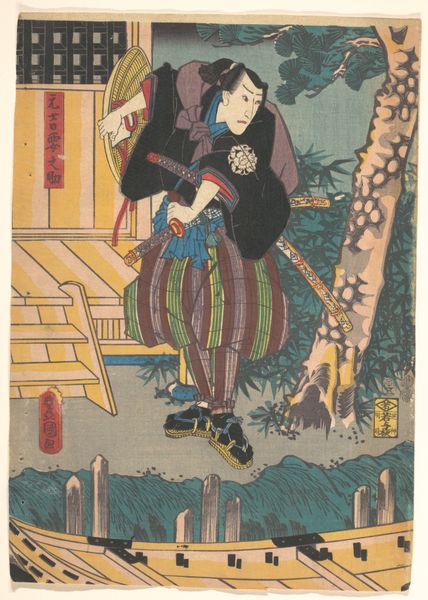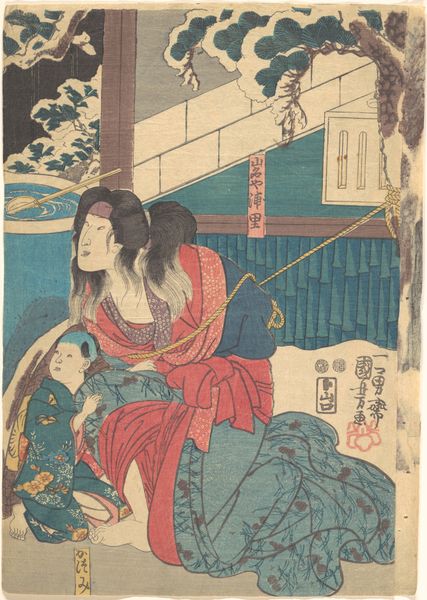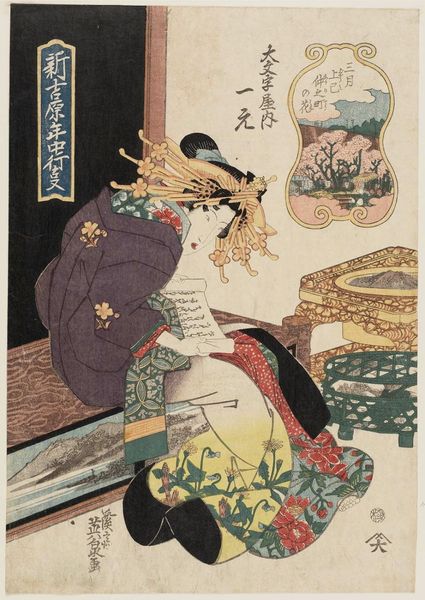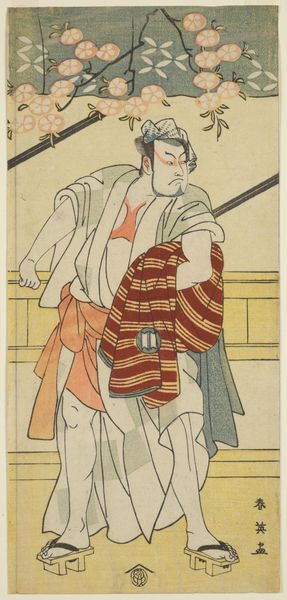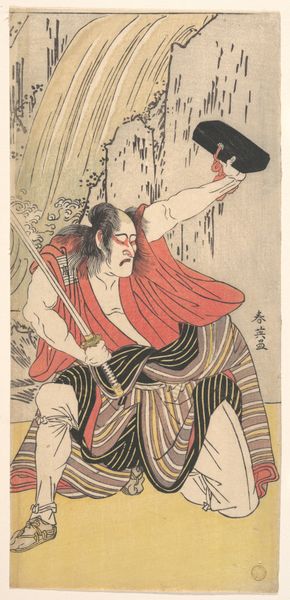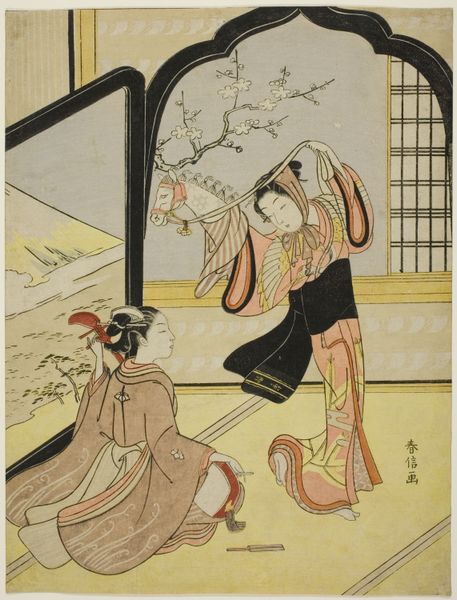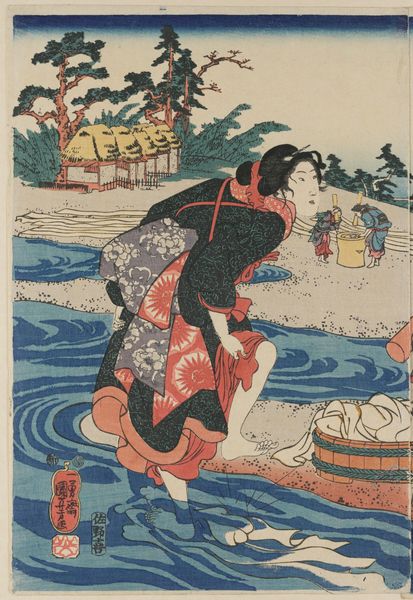
Copyright: Public Domain: Artvee
Tsukioka Yoshitoshi created this woodblock print called "Heishōkoku Kiyomori" in Japan during the late 19th century. Kiyomori was a powerful figure in Japanese history, known for his ambition and eventual downfall. Yoshitoshi was a late-Edo, early-Meiji printmaker and this piece reflects the social and political turbulence of that time. The image creates meaning through the use of visual codes and cultural references. Here, Kiyomori is depicted as a formidable, even ghostly presence. The floating skulls hint at death and the instability of power. Japan at this time was undergoing rapid modernization and westernization, and Yoshitoshi and other artists questioned the loss of traditional values. The print could be interpreted as a critique of unchecked ambition and its consequences, reflecting anxieties about Japan's changing social structure. To understand this artwork better, researchers might look into the history of the Taira clan, the life of Kiyomori, and the artistic conventions of ukiyo-e prints, as well as institutional records of printmaking during the Meiji Restoration. The meaning of art is always contingent on its social and institutional context.
Comments
No comments
Be the first to comment and join the conversation on the ultimate creative platform.
